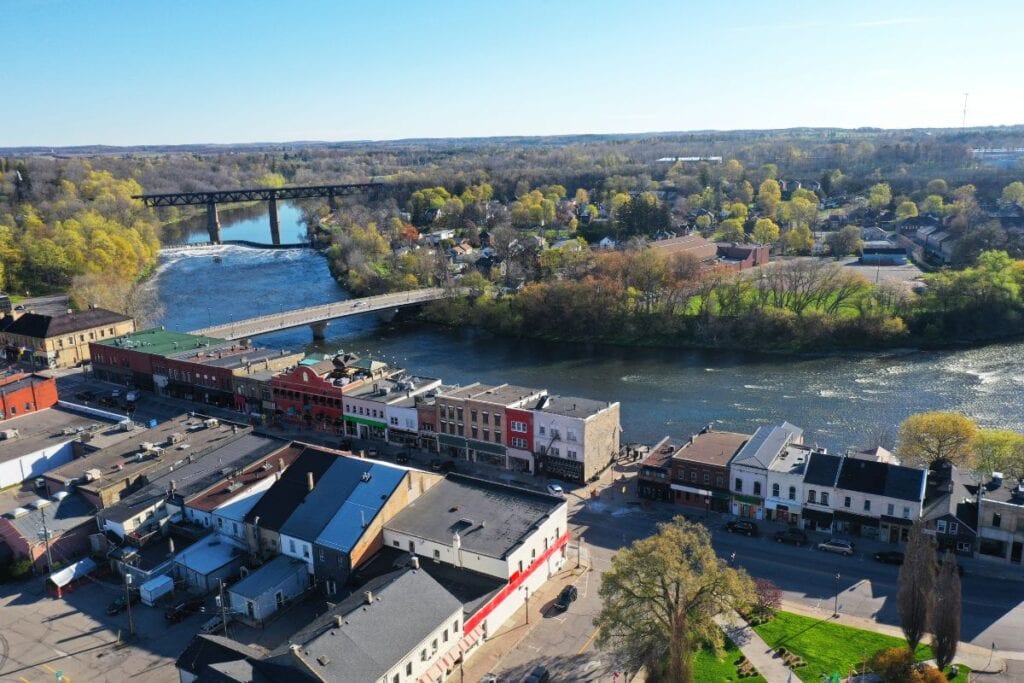Paris, Ontario, boasts a rich and colorful history that dates back to the early 19th century. The town is located at the confluence of the Grand and Nith Rivers in Brant County, Southern Ontario. Known as the "Cobblestone Capital of Canada" for its distinctive 19th-century cobblestone architecture, Paris offers a glimpse into Canada's early industrial and community development.
Early Settlement
The history of Paris begins with the land purchase by Hiram Capron, an American from Vermont, who acquired 1,000 acres in 1829. Recognizing the potential of the area, particularly due to the presence of the Grand River, Capron established a settlement that would eventually become Paris. The river was vital for transportation and provided the necessary power for mills, making the location ideal for development.
Industrial Growth
One of the significant factors contributing to Paris's growth was the discovery of large gypsum deposits. In 1824, gypsum was first discovered in the area by local settlers. This mineral resource led to the establishment of plaster mills, which significantly boosted the local economy. The town was named Paris in 1850, likely after the nearby deposits of gypsum, reminiscent of "plaster of Paris."
The town quickly became an industrial hub with the construction of various mills, including gristmills, sawmills, and textile mills. These industries attracted workers and their families, fostering a burgeoning community. The completion of the Grand River Navigation Company's improvements in the 1830s and 1840s further enhanced Paris's growth by making the river navigable for larger vessels.
Cobblestone Architecture
Paris is particularly famous for its unique cobblestone buildings, a legacy of the 19th century. These structures were constructed using rounded fieldstones, which were abundant in the region. Many of these historic buildings still stand today, contributing to Paris's charm and attracting tourists and historians alike.
Railway Expansion
The arrival of the railway in the mid-19th century was another pivotal moment for Paris. The construction of the Great Western Railway and later the Canadian National Railway provided vital links to other parts of Ontario and beyond. This connectivity facilitated the transport of goods and people, further boosting the local economy and contributing to the town's growth.
20th Century Developments
Throughout the 20th century, Paris continued to develop, balancing industrial activity with residential growth. The town maintained its historical character while gradually modernizing. Community life flourished with the establishment of schools, churches, and various local organizations. Paris also became known for its scenic beauty, with the Grand River offering recreational opportunities such as fishing, boating, and riverside trails.
Modern Paris
Today, Paris is a thriving community that proudly preserves its historical heritage while offering modern amenities. The downtown area features a mix of historic buildings, boutique shops, restaurants, and cultural venues. Annual events and festivals celebrate the town's history and community spirit, drawing visitors from near and far.
Paris has also embraced sustainable development, with efforts to protect its natural environment and promote eco-friendly practices. The combination of historical preservation, community engagement, and modern amenities makes Paris a unique and appealing destination in Southern Ontario.
Conclusion
From its early days as a mill-driven settlement to its current status as a charming and vibrant town, Paris, Ontario, has a rich history characterized by industrial innovation, architectural uniqueness, and strong community ties. The town's ability to preserve its heritage while adapting to modern needs makes it a notable example of Ontario's small-town charm and historical significance.




